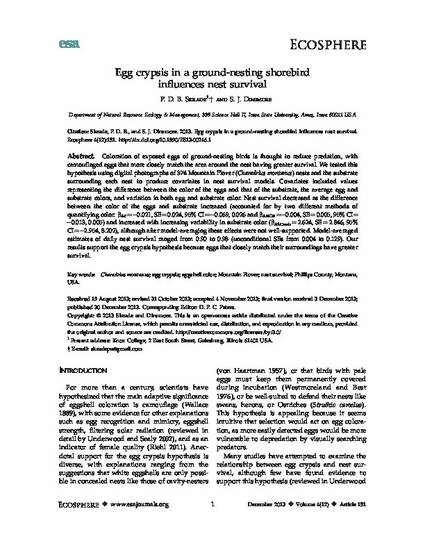
Coloration of exposed eggs of ground-nesting birds is thought to reduce predation, with camouflaged eggs that more closely match the area around the nest having greater survival. We tested this hypothesis using digital photographs of 374 Mountain Plover (Charadrius montanus) nests and the substrate surrounding each nest to produce covariates in nest survival models. Covariates included values representing the difference between the color of the eggs and that of the substrate, the average egg and substrate colors, and variation in both egg and substrate color. Nest survival decreased as the difference between the color of the eggs and substrate increased (accounted for by two different methods of quantifying color and increased with increasing variability in substrate color, although after model-averaging these effects were not well-supported. Model-averaged estimates of daily nest survival ranged from 0.90 to 0.98 (unconditional SEs from 0.004 to 0.129). Our results support the egg crypsis hypothesis because eggs that closely match their surroundings have greater survival.
Available at: http://works.bepress.com/stephen_dinsmore/55/

This article is from Ecosphere 4 (2013): art. 151, doi:10.1890/ES13-00246.1 Posted with permission.